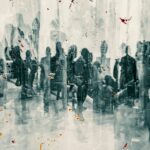In their 2010 article, Stephen Hawking and Leonard Mlodinow raise a fascinating philosophical question inspired by a city council decision in Monza, Italy. The council banned the use of curved fishbowls, arguing that they distorted a fish’s view of reality, which they considered cruel. This seemingly small ordinance serves as a springboard for a larger philosophical discussion: How do we know that the reality we perceive is accurate? Just as a goldfish in a curved bowl experiences a warped version of its environment, we, too, might be seeing a skewed reality through our own perceptual lenses.
In The Grand Design, a book co-authored by Hawking and Mlodinow, the authors explore how modern physics challenges traditional notions of reality. According to quantum theory, reality does not have a singular, fixed form. Instead, multiple realities, or histories, can exist simultaneously. This theory suggests that the universe we perceive is only one of many possible universes, all of which emerged spontaneously. This multiverse theory brings into question the idea of a singular, objective reality, much like how the curved fishbowl alters the goldfish’s perception.
The authors’ argument extends beyond the analogy, touching on profound concepts such as the fine-tuning of the universe’s laws and how quantum mechanics predicts a multiverse, where every possible version of reality exists simultaneously. As they suggest, “the universe doesn’t have just a single existence or history,” which mirrors the experience of the goldfish trapped in its curved bowl. Just as the fish’s distorted world is real to it, our reality may be only one lens through which we view the universe.








